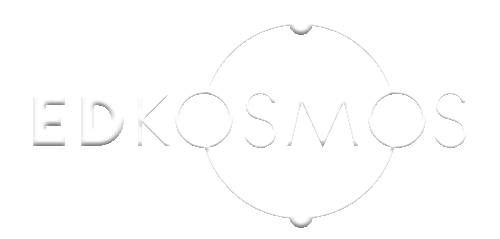Additional information
| Province | Manitoba |
|---|---|
| Colleges | The Learning Company |
| Program Categories | Healthcare |
| Program Duration | 66 Weeks |
| Program Intakes | September |
| Class Type | Hybrid |
| Funding |
Admissions Open
| Province | Manitoba |
|---|---|
| Colleges | The Learning Company |
| Program Categories | Healthcare |
| Program Duration | 66 Weeks |
| Program Intakes | September |
| Class Type | Hybrid |
| Funding |
Program Courses
Introduction to Anatomy and Physiology
Provides an introduction to basic scientific methods and critical thinking, as well as anatomy and physiology. A key goal is to become familiar with normal superficial anatomy and basic physiology to improve the comprehension of more specific and detailed information as presented later in the program.
Musculoskeletal Anatomy I
Explores the skeletal system and its development. Students learn to identify bony landmarks, the articulations of the skeletal system as well as the relevant ligaments and the nerve supply of the upper and lower extremity
Musculoskeletal Anatomy II
Develops an understanding of the entire muscular system and skull, including an examination of location, origin, insertion, action and nerve supply of each muscle. Instructors also demonstrate and guide accurate palpation of accessible muscles.
Musculoskeletal Anatomy III
Studies the muscular system of the vertebral column, thorax, abdominal wall, abdominopelvic cavity and the perineum, including a thorough examination of the location, origin, insertion, action, and nerve supply of each muscle. Along with the above, accurate palpation of accessible musclesis demonstrated with guided practice of proper techniques.
Pathophysiology I
Provides an understanding of blood and its disorders. Students learn about the immune system, its organization and components as well as its disorders. A key goal is to familiarize students with normal physiology and then the pathophysiology association with the system.
Pathophysiology II
Provides an understanding of systemic and/or orthopedic pathology as it relates to the muscular, skeletal, nervous, endocrine, respiratory and circulatory systems. This course also provides an understanding of the normal physiology of the endocrine and circulatory systems.
Pathophysiology III
Reviews pathophysiology as it relates to the digestive, urinary, reproductive, and the integumentary and endocrine systems.
Physiology I
Explores how cells, tissues, organs and organ systems function together to create one organism. A key goal is to familiarize students with normal physiology to be able to comprehend pathological conditions as presented later in the program.
Physiology II
Provides an understanding of the muscular system as well as the nervous system, including its organization and components, neurons, synapses and receptors, the central nervous system, the peripheral nervous system, and the cardiovascular system. A key goal is to familiarize studentswith normal physiology to be able to comprehend pathological conditions as presented later in the program.
Clinical Massage Treatments I
Develops an understanding of postural dysfunctions and its treatment utilizing all manual therapy techniques including hydrotherapy and rehabilitation exercises. Examine postural dysfunctions (fascial and muscle imbalances, ITB friction syndrome, patellofemoral syndrome, hyper/hypolordosis, scoliosis), overuse injuries (plantar fasciitis, periostitis and compartment syndromes, tendonitis, bursitis, adhesive capsulitis), conditions of the head and neck (WAD, torticollis), joint dysfunctions (DDD, OA, RA, AS, and gout), review musculoskeletal injuries.
Clinical Massage Treatments II
Provides an understanding of CNS disorders including communication aids, ambulation aids, decubitus ulcers, seizures, hemiplegia, spinal cord injury, cerebral palsy, polio, MS, Parkinsons, respiratory conditions (sinusitis, chronic bronchitis, emphysema, asthma), systemic conditions(fibromyalgia and chronic fatigue syndrome, dupuytren?s contracture, osteoporosis, cancer, diabetes), circulatory dysfunctions (hypertension, heart failure), and compression and peripheral nervous system conditions. Students also learn about the treatment of CNS disorders utilizing all manual therapy techniques including hydrotherapy and rehabilitation exercises.
Clinical Massage Treatments III
Provides opportunity to review treatment and assessment (utilizing all manual therapy techniques including hydrotherapy and rehabilitation exercises) for all conditions learned to date. Students address research, create poster projects and prep for board exam practice/prep. Students also review how to interpret assessment findings in order to formulate a clinical impression/differential diagnosis for all previous conditions covered.
Orthopaedic Assessment I
Provides the understanding of orthopedic physical assessment in a straightforward, systematic approach to performing a neuromusculoskeletal assessment and the rationale behind various aspects of the assessment. This course provides an understanding of principles and concepts of assessment, gait and posture analysis.
Orthopaedic Assessment II
Students develop an understanding of orthopedic physical assessment in a straightforward, systematic approach to performing a neuromusculoskeletal assessment and the rationale behind various aspects of the assessment. This course provides an understanding of principles andconcepts of assessment, as well as assessment of the shoulder, elbow, forearm, wrist, hand and hip.
?
Orthopaedic Assessment III
Provides an understanding of orthopedic physical assessment in a straightforward, systematic approach to performing a neuromusculoskeletal assessment and the rationale behind various aspects of the assessment. This course provides an understanding of principles and concepts of assessment, as well as assessment of the knee, lower leg, ankle and foot. As well, a review of all orthopedic assessment studied thus far, as well as practice using orthopedic assessment with case studies.
Orthopedic Assessment IV
Builds on the foundation formed in previous courses, students continue to develop their knowledge of orthopedic physical assessment and obtain an even greater understanding of the concepts and principles of assessing the spine and peripheral joints.
Pharmacology
Introduces the general principles underlying the use of drugs. In addition, students are introduced to common uses and effects of drugs, implications of how medications are administered, and client safety guidelines to incorporate into everyday practice.
Communication and Ethics
Provides an understanding of the acceptance of responsibility for professional communication, conformance to intraprofessional and inter-professional communication methods and standards,and use of conflict resolution and problem solving techniques. It will also provide an understanding of the establishment of professional client relations, formation of sound judgments about therapeutic vs. non-therapeutic boundary and trust issues, and the formation of sound judgments about sexual impropriety, boundary and trust issues
Business and Legal Practice
Reviews accepted business management concepts, the establishment of external business relationships, the development of adequate documentation and record keeping, conformance to common law, and participation in quality assurance program.
Introduction to Research
Introduces the topic of research including what research is, the importance of research, and the various methods that researchers use to investigate problems. As part of the course, students are challenged to develop a research proposal.
Clinical Rehabilitation and Kinesiology
Provides an understanding of the application of general principles of kinesiology, general principles of therapeutic exercise, the application of range-of-motion exercises, and the application of resistance/strength exercises. As well, this course will provide an understanding of the application of cardiovascular exercise, application of static control, movement and functional rehabilitative applications, and design of an exercise program.
Exercise and Nutritional Physiology
Explores basic concepts of exercise physiology, the role of macro nutrients, the role of micronutrients, the role of fibre, and basic nutritional concepts.
Massage Theory and Practice
Reviews the history and contemporary use of Massage Therapy, the application of various massage theories, the practice of appropriate client care, support of public health practices and the application and understanding of Swedish massage techniques.
General Principles and Techniques I
Provides an understanding of general treatment principles, stretching, joint mobilization techniques, traction & nonspecific mobilization, lymphatic drainage, and hydrotherapy.
General Principles and Techniques II
Develops an understanding of connective tissue techniques, neuromuscular techniques, and friction therapy. As well, it examines treatments for pain syndrome management techniques, gastrointestinal conditions and common musculoskeletal injuries, such as sprains, strains, cruciate, meniscal injuries, etc.
Public Clinic/Outreach
Facilitates a dynamic learning process to ensure students attain ?Hands-on Treatment Credits? under the supervision of Registered Massage Therapists. Clinic and outreach allows students to combine the knowledge and skills from other courses and apply it directly to patient care. We also provide group outreach opportunities at carefully picked events that allow students to treat specific demographics and gain experience treating a variety of conditions not often seen in a public clinic.
CPR / First Aid
As part of this program, students attain First Aid/CPR certifications.

